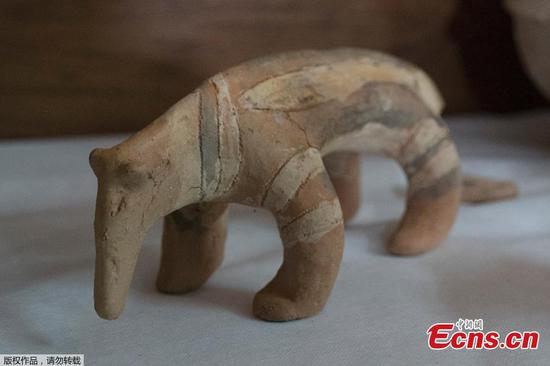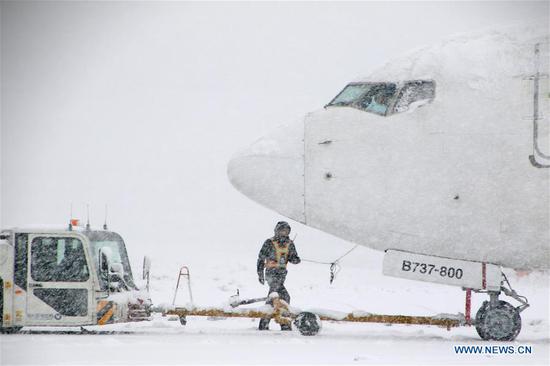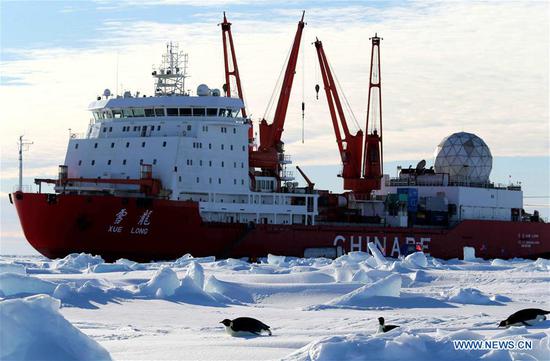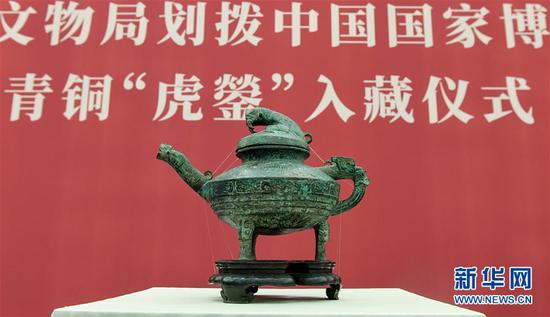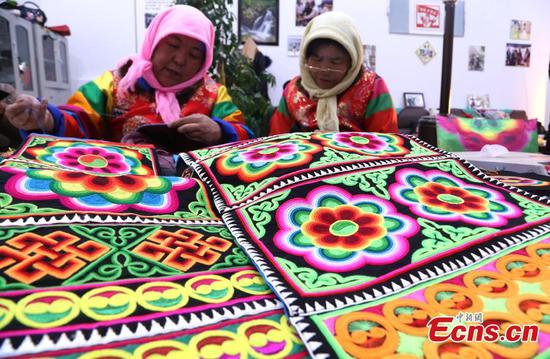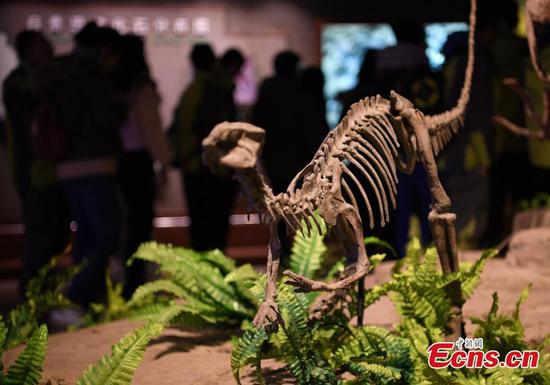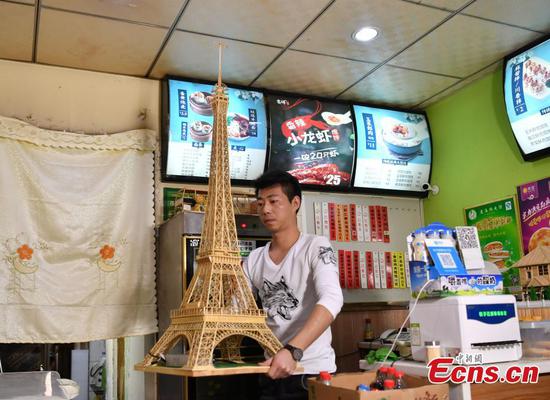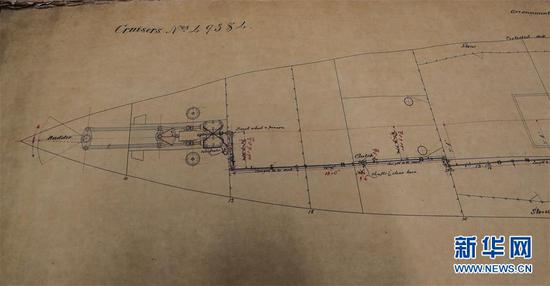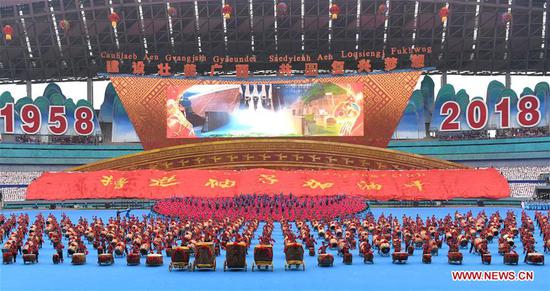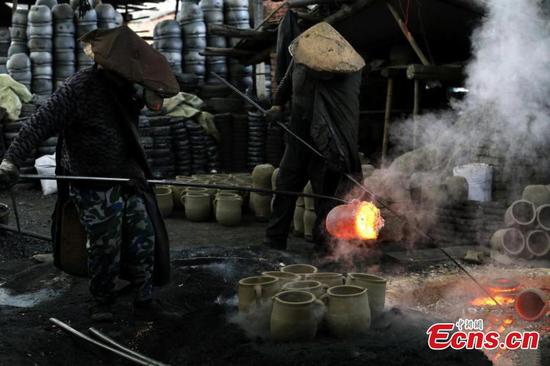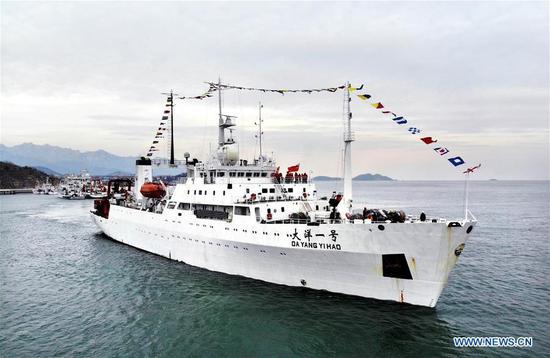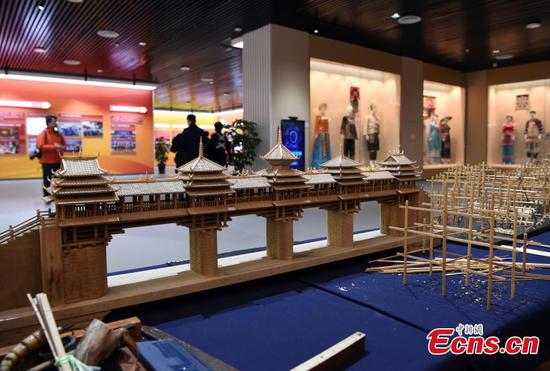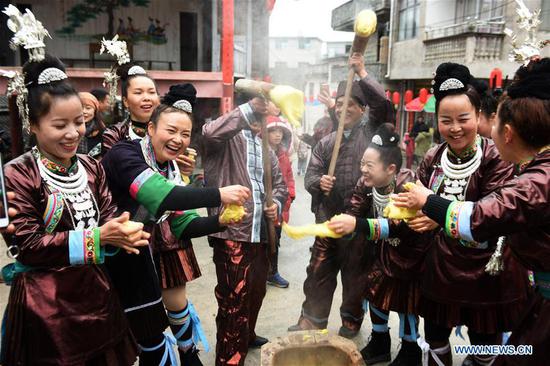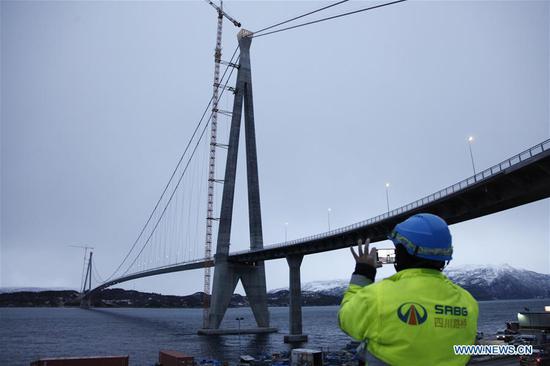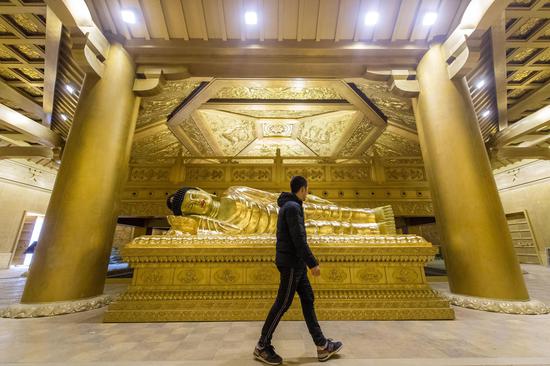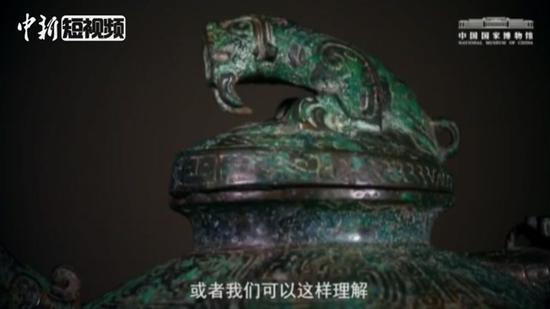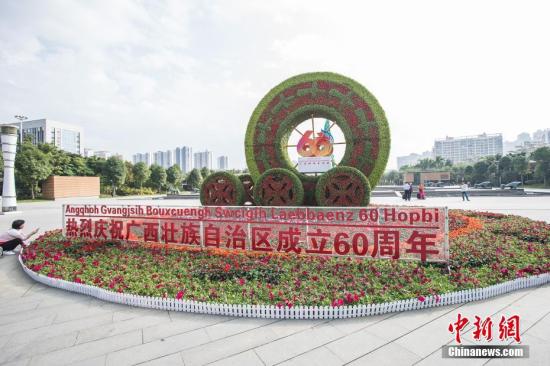
Guangxi Zhuang Autonomous Region is ready to celebrate its 60th anniversary of establishment. (Photo/China News Service)
Loaded with 22 containers, a freight train carrying motorbikes and textiles arrives at the east station of Qinzhou Port in south China's Guangxi Zhuang Autonomous Region at dusk and waits for customs clearance.
Then, these goods are shipped from the coast of Guangxi to Singapore, Hong Kong and other ports in Southeast Asia.
"The station was built in 2015 with one person on duty each day, though not so many goods were unloaded. Now, at least ten people are in charge of loading three freight trains every day," said Huang Guanghui, director of the station.
Huang is responsible for the rail-sea transit trains, which were initially put into operation in May 2017.
As an important part of the New International Land-Sea Trade Corridor (ILSTC), the rail-sea routes use ports in Guangxi's Beibu Gulf to offer a faster and cheaper freight transport option between western China and Southeast Asia.
Guangxi is an important border area that connects China with ASEAN countries and plays a key role in the construction of the Belt and Road Initiative, which was proposed by China in 2013 to build trade and infrastructure networks connecting Asia with Europe and Africa based on ancient land and maritime trade routes.
Local statistics show that a total of 697 freight trains carrying 35,060 containers were launched in the first three quarters of this year. Now, there are regular cargo ship services from Beibu Gulf to Hong Kong and Singapore. Products from countries along the Belt and Road routes, such as fruit and rice, have entered the Chinese market via the rail-sea route.
"Seafood and nuts from Vietnam have been selling well recently," said Tan Xiangwu, a local of Hezhou Village in the border city of Dongxing. Tan has been doing border trade since 2013.
As a result of the construction of the Belt and Road Initiative, an increasing number of villagers from the border areas have started doing border trade.
Tan said the company he works for used to trade no more than 500 kg of nuts, mainly cashew nuts, each day about five years ago, now the company trades five tonnes of various nuts per day.
The booming border trade has brought more than 60,000 jobs and helped increase the local people's annual per capital income to 12,000 yuan (about 1,743 U.S. dollars) over the past three years, according to Zhou Shijun, party chief of the Dongxing city.
Statistics also show that Guangxi has built 22 new expressways that lead to other provinces or neighboring countries as well as 15 international passenger and cargo transport routes over the past five years.
The Belt and Road Initiative has not only brought benefits to people in Guangxi but also created jobs for those in neighboring countries.
As a significant part of the construction of the Belt and Road Initiative, China and Vietnam launched the cross-border labor service cooperation in 2015. As a result of the cooperation, the Vietnamese living around the China-Vietnam border can travel between the two countries freely with special certificates.
At present, over 100,000 Vietnamese workers are working in the border cities of Pingxiang and Dongxing in Guangxi, which has helped relieve the labor shortage of the enterprises in the border areas.
Thanks to the Belt and Road Initiative, companies in Guangxi have also found opportunities to invest in other countries along the trade routes.
SAIC-GM-Wuling Automobile Co. (SGMW), based in the city of Liuzhou, is an important automobile manufacturer in China. With an investment of 700 million U.S. dollars, SGMW built a factory in Indonesia in July 2017 with an annual output of 120,000 automobiles.
In fact, over 20 enterprises in Guangxi have invested to construct factories in Indonesia. SGMW's factory in Indonesia has created more than 3,000 jobs for the local people, said Lian Chaochun, vice-general manager of SGMW.
Wang Yuzhu, executive dean of the China-ASEAN Research Institute of Guangxi University, said the increasing investment from enterprises in Guangxi to countries along the Belt and Road routes will boost the economic development of these countries and creat more jobs there.
By the end of June 2018, Guangxi enterprises had invested in over 80 countries. In the first half of 2018, the total volume of Guangxi's foreign trade had reached 104.1 billion yuan, according to the regional commerce department.
Apart from the contribution to regional economic growth, the Belt and Road Initiative has also boosted cultural and educational communication between Guangxi and participating countries, said Luo Yaoguang, an official with the regional education department.
So far, Guangxi has cooperated with more than 200 universities and colleges from countries along the Belt and Road routes, with about 14,000 overseas students studying in Guangxi in 2017, according to Huang.
"Guangxi's development is similar to that of many countries along the Belt and Road routes in various fields, including agriculture, power supply and renewable energy," said Wang Yuzhu.
Guangxi will play a more significant role in cooperation with these countries in the future, Wang added.











